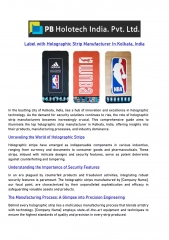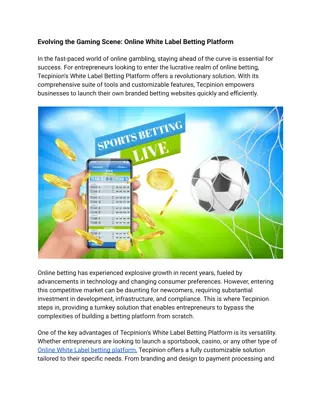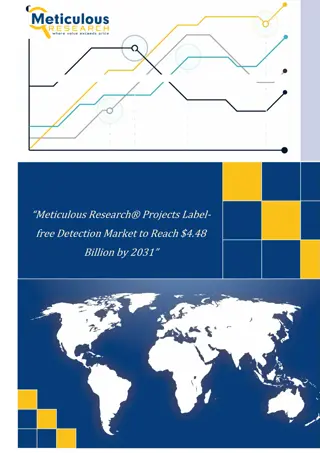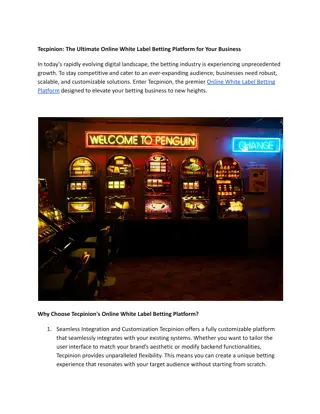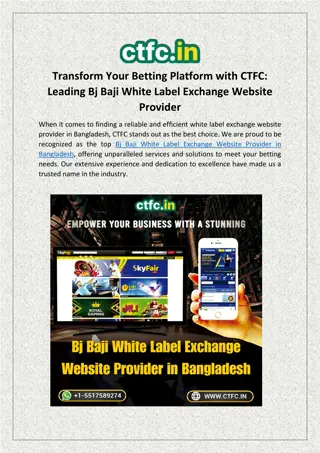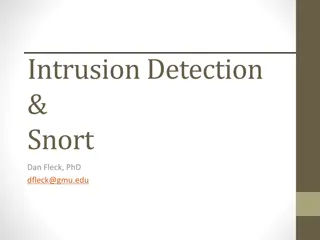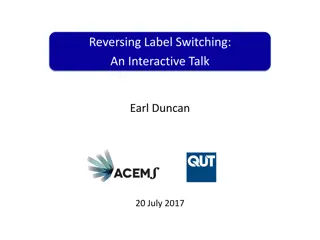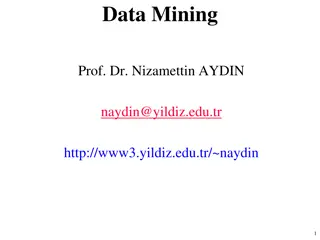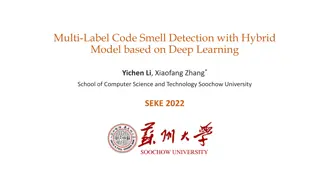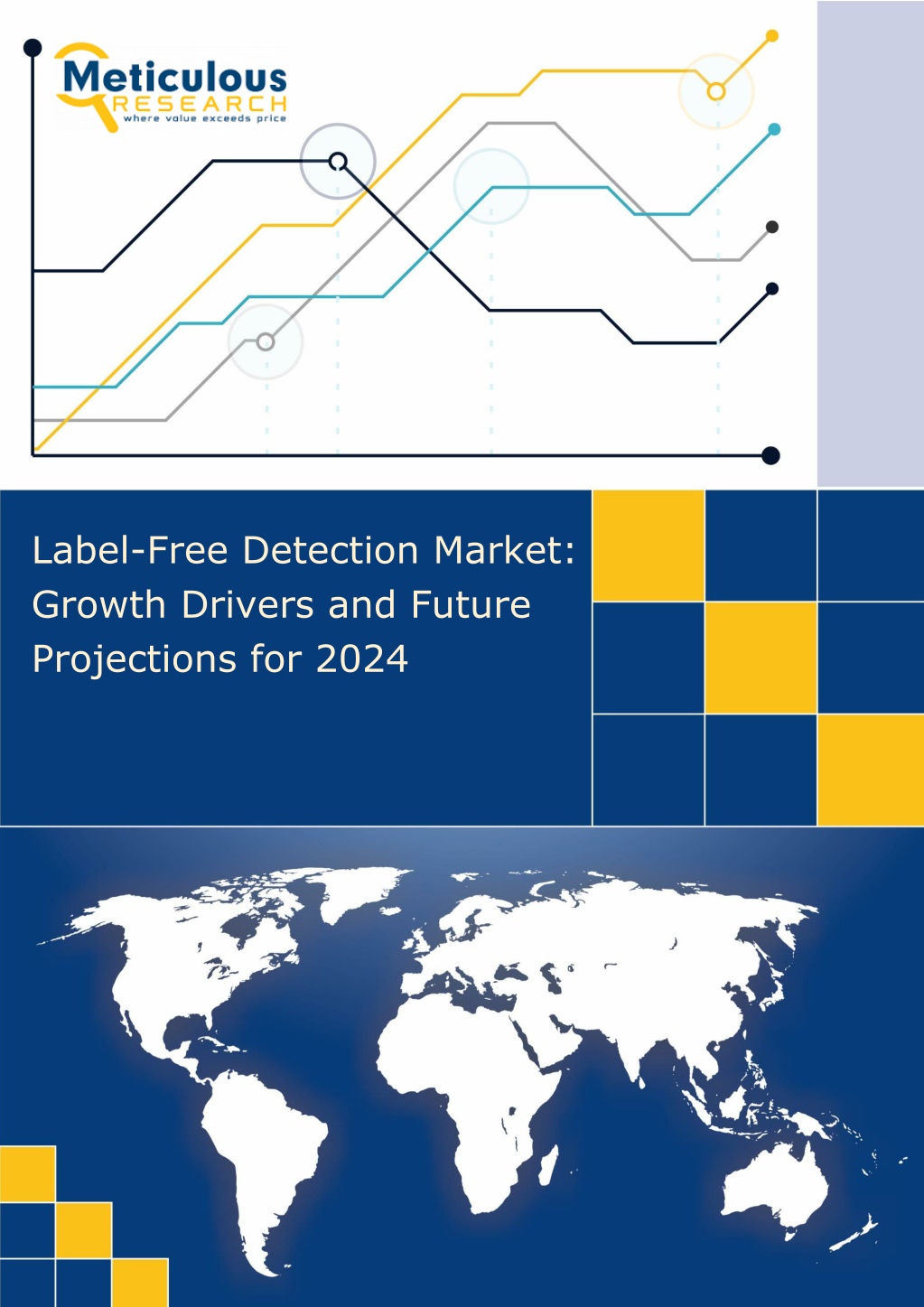
Label-Free Detection
The global label-free detection market is poised for significant growth, expected to hit $4.48 billion by 2031, fueled by rising applications in drug discovery and diagnostics.n
Download Presentation

Please find below an Image/Link to download the presentation.
The content on the website is provided AS IS for your information and personal use only. It may not be sold, licensed, or shared on other websites without obtaining consent from the author. Download presentation by click this link. If you encounter any issues during the download, it is possible that the publisher has removed the file from their server.
E N D
Presentation Transcript
Label-Free Detection Market: Growth Drivers and Future Projections for 2024
Label-free Detection Market 2024-2031 In the rapidly evolving field of biotechnology, label-free detection technologies are emerging as transformative tools in research and drug development. According to a recent report by Meticulous Research , the Label-Free Detection Market is projected to achieve a valuation of $4.48 billion by 2031, growing at a robust compound annual growth rate (CAGR) of 9.8% during the forecast period. This growth is driven by various factors, including advancements in pharmaceuticals and biotechnology, increased government funding for research and development, and a growing emphasis on personalized medicine. Download Sample Report Here @ https://www.meticulousresearch.com/download-sample- report/cp_id=3408 Label-free detection technologies, which include methods such as Surface Plasmon Resonance (SPR) and Bio-Layer Interferometry (BLI), enable real-time observation of biomolecular interactions without the need for labels or tags. This capability is particularly advantageous in research settings where the integrity of biomolecular interactions is critical. Traditional methods often rely on the use of fluorescent or radioactive labels, which can alter the behavior of the molecules under study. Label-free techniques mitigate this issue, providing researchers with more accurate and reliable data. The pharmaceutical industry is one of the primary sectors benefiting from the capabilities of label- free detection technologies. The process of drug discovery is complex, time-consuming, and costly, often taking over a decade and billions of dollars to bring a new drug to market. Label-free detection technologies streamline this process by providing researchers with real-time insights into binding interactions, allowing for rapid identification and optimization of promising drug candidates. This acceleration in the drug discovery process is crucial as the demand for new and effective treatments continues to rise. Furthermore, the increasing focus on personalized medicine is driving demand for label-free detection technologies. Personalized medicine emphasizes the importance of tailoring treatments to individual patients based on their unique genetic, environmental, and lifestyle factors. This approach necessitates advanced analytical tools capable of conducting detailed molecular profiling. Label-free detection technologies are particularly well-suited for this purpose, enabling researchers to identify specific biomarkers and tailor therapies to meet individual patient needs. This capability is especially significant in oncology, where understanding the molecular profile of a tumor can profoundly impact treatment outcomes. In addition to drug discovery, label-free detection technologies are vital in the development and characterization of biologics and biosimilars. These complex therapeutic agents require rigorous analysis to ensure their safety and efficacy. Label-free detection methods provide the necessary sensitivity to study these interactions, making them essential tools in the development and quality control processes of biologic drugs. The ability to analyze biomolecular interactions without labels not only enhances the understanding of these complex molecules but also aids in the assessment of product quality and stability. Government support and funding are crucial in driving the growth of the label-free detection market. Many governments recognize the significance of biotechnology and healthcare innovation, leading to increased investments in research and development initiatives. This financial backing is vital for advancing drug discovery processes and developing personalized medicine approaches. As governments prioritize healthcare innovation, funding for research initiatives creates an environment Page 1 of 4 Meticulous Research| sales@meticulousresearch.com
Label-free Detection Market 2024-2031 conducive to the adoption and implementation of label-free detection technologies among researchers. Despite the promising growth outlook, several challenges remain that could impede the widespread adoption of label-free detection technologies. One significant barrier is the high cost associated with acquiring and maintaining advanced label-free detection instruments. Technologies such as optical biosensors and microcalorimeters often come with substantial price tags, making them less accessible to smaller research institutions and organizations operating on limited budgets. This financial barrier can hinder the broader implementation of these technologies across various research environments. To gain more insights into the market with a detailed table of content and figures, click here: https://www.meticulousresearch.com/product/label-free-detection-market-3408 Moreover, the complexity of operating label-free detection instruments presents another challenge. These sophisticated technologies require specialized knowledge and skills to ensure effective data interpretation and analysis. The current shortage of trained professionals in this field can limit the adoption of label-free detection methods. To address this issue, educational institutions and industry stakeholders must collaborate to develop training programs that equip researchers with the necessary expertise to operate and interpret data from these advanced tools. Recent advancements in technology are paving the way for overcoming some of these challenges. Innovations in label-free detection technologies are leading to the development of more user-friendly instruments that are accessible to a broader range of researchers. New generations of devices often incorporate automated processes that simplify operation and reduce the need for specialized training. Furthermore, ongoing research efforts are aimed at enhancing the sensitivity and specificity of label- free detection methods, particularly for detecting low-mass small molecules. As these technological advancements continue to unfold, the market is expected to become more inclusive, fostering greater adoption across diverse research settings. Geographically, the label-free detection market exhibits varying growth dynamics and investment levels across different regions. North America, especially the United States, is anticipated to remain at the forefront of the label-free detection market in 2024. This leadership position can be attributed to the presence of major label-free detection companies, advanced healthcare infrastructure, and significant government funding for research initiatives. The region's strong focus on innovation and technological advancement further solidifies its status as a leader in the label-free detection space. Europe is also emerging as a notable player in the label-free detection market, with countries such as Germany, the United Kingdom, and France leading the way. The European market benefits from a robust research environment characterized by collaboration between academic institutions and industry stakeholders. Moreover, increasing investment in biopharmaceutical research and development in Europe contributes to the growth of label-free detection technologies. In the Asia-Pacific region, countries like China and India are rapidly becoming significant contributors to the label-free detection market. Increasing investment in healthcare infrastructure, combined with the rising prevalence of chronic diseases, is driving demand for advanced diagnostic and therapeutic tools. As these countries continue to develop their biotechnology sectors, the adoption of label-free detection technologies is expected to rise, creating substantial growth opportunities. Page 2 of 4 Meticulous Research| sales@meticulousresearch.com
Label-free Detection Market 2024-2031 In conclusion, the label-free detection market is poised for remarkable growth in the coming years, driven by technological advancements, increasing demand in the pharmaceutical and biotechnology sectors, and strong government support for research and development initiatives. While challenges such as high costs and a shortage of skilled professionals persist, the ongoing evolution of label-free detection technologies presents promising opportunities for researchers and industry stakeholders alike. As the healthcare landscape continues to evolve towards more personalized and efficient treatment options, label-free detection technologies will play an increasingly vital role in shaping the future of drug discovery and development. Key Players The key players operating in the label-free detection market are Danaher Corporation (U.S.), PerkinElmer, Inc. (U.S.), Agilent Technologies, Inc. (U.S.), Bio-Rad Laboratories, Inc. (U.S.), GE HealthCare Technologies, Inc. (U.S.), Thermo Fisher Scientific Inc. (U.S.), Sartorius AG (Germany), Corning Inc. (U.S.), Horiba, Ltd. (Japan), Malvern Panalytical Ltd (U.K.), and Bruker Corporation (U.S.). Buy Now : https://www.meticulousresearch.com/Checkout/81435285 Key Questions Answered in the Report: Which are the high-growth market segments in terms of product type, technology, application, process, end user, and region/country? What was the historical market size for label-free detection across the globe? What are the market forecasts and estimates for 2024 2031? What are the major drivers, restraints, opportunities, and challenges in the global label-free detection market? Who are the major players operating in the global label-free detection market? What is the competitive landscape like, and who are the market leaders in the global label- free detection market? What are the recent developments in the label-free detection market? What strategies are adopted by the major players in the label-free detection market? What are the geographical trends and high-growth regions/countries? Related Reports Computer-aided Detection (CAD) Market : https://www.meticulousresearch.com/product/computer-aided-detection-cad-market- 5756 1 Dental CAD/CAM Systems and Consumables Market : https://www.meticulousresearch.com/product/dental-cad-cam-systems-consumables- market-3115 Page 3 of 4 Meticulous Research| sales@meticulousresearch.com
Label-free Detection Market 2024-2031 Contact Us: Meticulous Research Email- sales@meticulousresearch.com Contact Sales- +1-646-781-8004 Connect with us on LinkedIn- https://www.linkedin.com/company/meticulous-research Page 4 of 4 Meticulous Research| sales@meticulousresearch.com



